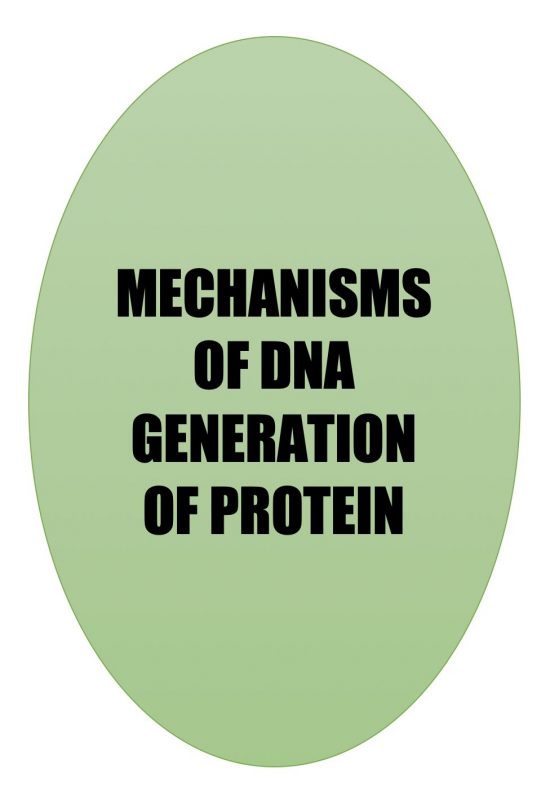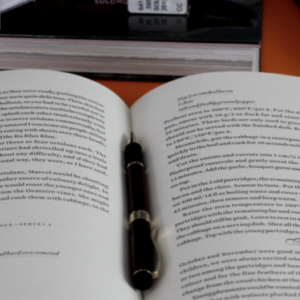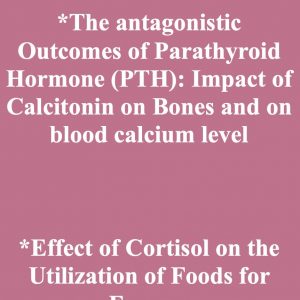DNA Generation of Protein Mechanisms
Mechanisms in which DNA is used to generate protein contains two courses- they are transcription and translation processes. DNA is expended as a pattern to create a molecule of messenger RNA known as mRNA molecule which transports from the nucleus to a ribosome in the cytoplasm, and then translation takes place where the genetic code in mRNA is read and utilized to create a protein.
Outline of the mechanisms in which DNA is used to generate protein mentioned above.
1. Transcription genetic information is transported in DNA to mRNA in the nucleus, process involves stages of initiation, elongation, and termination; once the mRNA is read and utilized/processed, it carries the information/directions to a ribosome in the cytoplasm.
2. Translation stages in the ribosome in the cytoplasm and consists of rRNA and proteins during this translation phase, the instructions in mRNA are read, the tRNA transports the correct sequence of amino acids to the ribosome while rRNA enables the bonding between the amino acids to create a polypeptide chain and worth of note that created polypeptide may also pass through more processing to create or generate the finished protein.
Prokaryotes can translate mRNA into proteins while the DNA is being transcribed. Transcription takes in the nucleus of eukaryotic cells, an eukaryotic cells has nucleus, multiple organelles and multiple DNA arranged in multiple, linear chromosomes, having a complexity of ribosomes and larger. However, prokaryotic cells operates on simple cell structure having no nucleus neither do they possess organelles and only have small amount of DNA shaped of a single, circular chromosome.
Eukaryotes are obligated to end transcription of given fragment, transport it out of nucleus and after which it then translates it. Prokaryotic protein synthesis can be moderately fast due to the fact that one gene is able to transcribe and translate simultaneously compared to Eukaryotic synthesis which is relatively slower, though more important as they are able to read/check the mRNA before it is translated into protein. During translation which involves tRNA, the initiating amino acid are different for both eukaryotes and prokaryotes.
Epigenetics & developmental epigenetics in Health & Disease
Epigenetics heritable changes that do not encompass changes in the DNA sequence, it involves scientific research that unravels how environmental impact influences the development of organisms for example, fetus in the womb or children’s encounters can have a significant impact on the of their genes due to the fact that the DNA that brands up our genes accrues chemical inscriptions known as epigenome that determine the rate at which genes are stressed during developmental stage and this also attributes to the reason why even twins do not possess the same character, health, skills and so on.
Incorrect epigenetic expression or stress has the potential of causing abnormalities such as birth defects, childhood diseases, and diseases symptoms while in other stages of life. Epigenetic mechanisms has the potential of controlling developmental and adaptational features during the life span of an organism, however changes/shift modification could consequentially end in diverse disorders such as cancer.
On the other hand, some epigenetic marks can be reversible, and this fact has encouraged many researchers to focus on epigenetic therapy in recent years, has been demonstrated that DNA methylation, in diverse cases are irreversible.
Example and Consequences of RNA strands to Peptide Sequence
When translating identical RNA strands into peptide sequences, using the first base of each as the first triplet in a codon, both beginning with Serine- Ser (s) and second line in each strand’s codon reads UGU and UG, which means the ‘U’ in bold in the second strand has been deleted. Normally just as the first reads UGU which encodes Cys that is Cysteine amino acid, the second U for the second strand has been deleted and there results in a shift in the frame, in fact we can now see that one is of longer chain than the other because a shift in the frame has occurred.
* agu/ugu/uaucgaaaacugcgaguaaauauccugagggcgcgaagcaacc
* agu/ug/uaucgaaaacugcgaguaaauauccugagggcgcgaagcaacc
Consequences may result into mutation as deletions of most types results into mutations due to a section of DNA is being lost or simply put- deleted. Protein-coding DNA are normally divided into three bases long and also referred to as the codons, any omission or removal of a base can change or modify the gene that is supposed to be produced and the normal or correct message that is supposed to be parsed for that protein-coding DNA would not be parsed because it is incorrect all because a change called frame shift has occurred, therefore a deletion a single base of the peptide has succeeded in changing the remaining sequence; in conclusion, a wrong protein or a nonfunctional protein would be the result of Cysteine (c) that is supposed to be formed in the second strand. To back this up that this could result in mutation; because Cysteine has an extremely reactive sulfhydryl group at its side chain it becomes so unique and placed in position that cannot be changed or substituted by any other amino acid.



